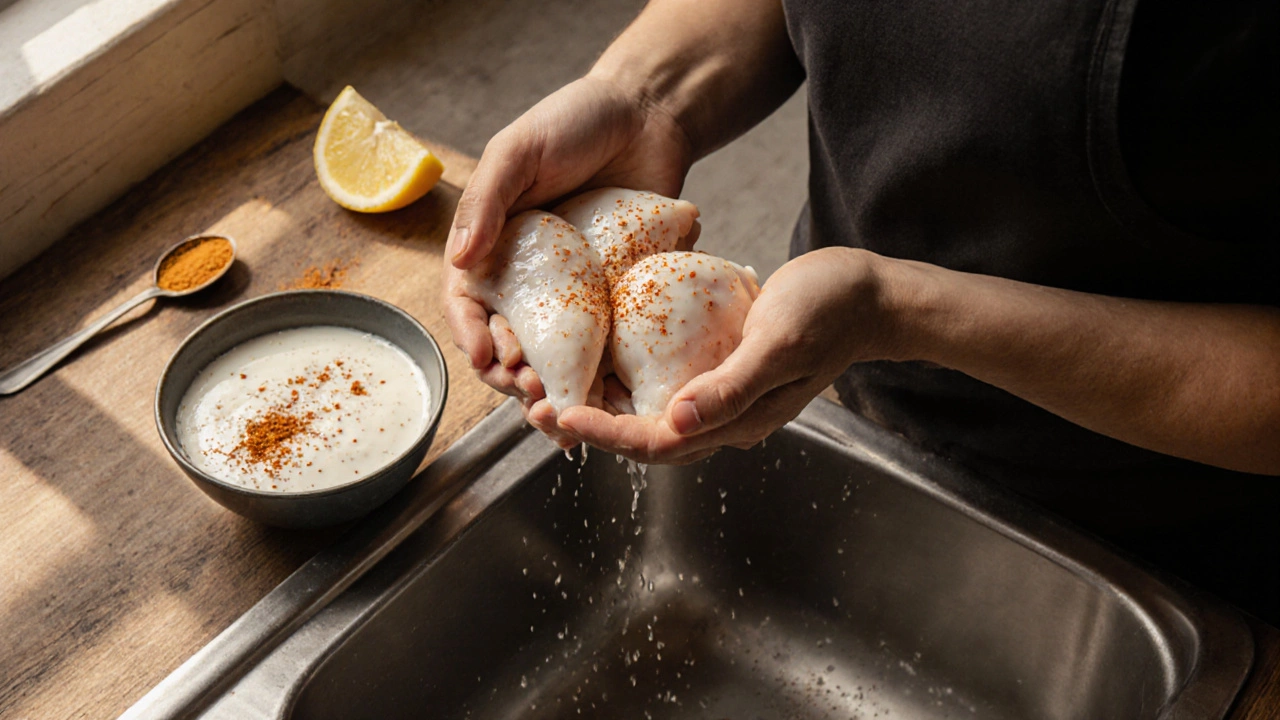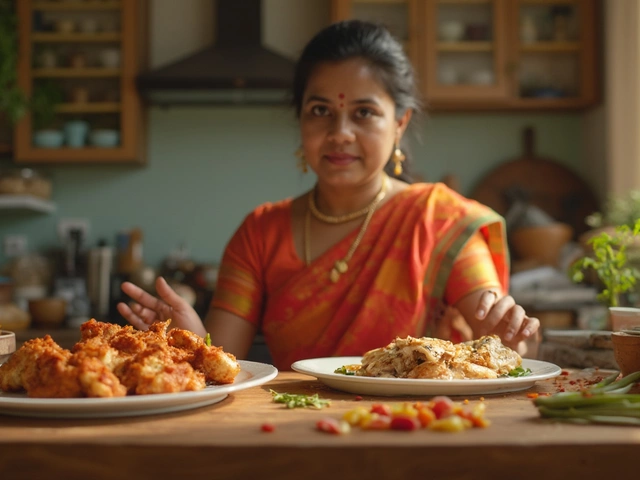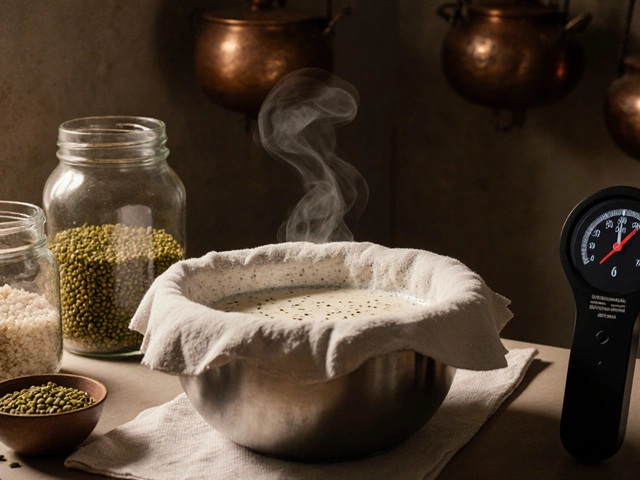Yogurt Marinade Rinse Decision Guide
Should You Rinse Your Yogurt Marinade?
This interactive tool helps you determine if rinsing your yogurt marinade before cooking is appropriate based on your specific cooking conditions. Based on the science discussed in our article about tandoori chicken, rinsing is generally not recommended, but there are a few exceptions.
Please fill out the form to get your personalized recommendation.
Ever stood over the sink, wondering whether you should give that thick, tangy yogurt marinade a quick rinse before the chicken hits the grill? It’s a question that pops up every time I fire up a tandoori chicken session, and the answer isn’t as black‑and‑white as you might think.
What Exactly Is a Yogurt Marinade?
Yogurt Marinade is a mixture of plain yogurt, acidic components (like lemon juice or vinegar), and a blend of Indian spices that coats meat before cooking. The creamy base does more than just add flavor; it creates a protective film that keeps the meat moist while the acids and enzymes break down protein fibers.
The Science Behind Yogurt in Marinades
Plain yogurt has a pH of around 4.5, which is mildly acidic. That acidity denatures proteins, making them softer. At the same time, live cultures in yogurt release proteolytic enzymes that further tenderize the meat. When you combine this with spices such as Garam Masala (a classic Indian spice blend of cumin, coriander, cardamom, and more), the result is a deep, smoky flavor that only intensifies during high‑heat cooking.
Typical Ingredients for a Tandoori Chicken Yogurt Marinade
- Plain whole‑milk yogurt (1 cup for 4‑6 pieces of chicken)
- Fresh ginger‑garlic paste (1 tablespoon)
- Ground cumin, coriander, and turmeric (½ teaspoon each)
- Crushed red chili flakes or cayenne (¼-½ teaspoon, to taste)
- Garam Masala (½ teaspoon)
- Lemon juice or white vinegar (1 tablespoon)
- Salt (1 teaspoon)
- Optional: mustard oil or ghee for richer flavor
After whisking everything together, the chicken pieces are tossed in the blend and left to marinate for anywhere between 2 hours and overnight.
Does Rinsing the Marinade Change the Flavor?
Rinsing essentially washes away the surface layer of the yogurt mixture. That means you lose:
- Flavor depth - The spices that sit on the skin are responsible for the signature orange‑red hue and the caramelized crust.
- Moisture retention - The yogurt film locks in juices; without it, the meat can dry out, especially on a hot grill.
- Safety buffer - The acidity creates a hostile environment for surface bacteria. Rinsing removes that barrier.
On the flip side, a few cooks argue that a thin layer of excess yogurt can burn, leaving a bitter taste. If you’re using a very high‑heat tandoor, a quick pat‑dry with paper towels-rather than a full rinse-might be enough to avoid scorching.
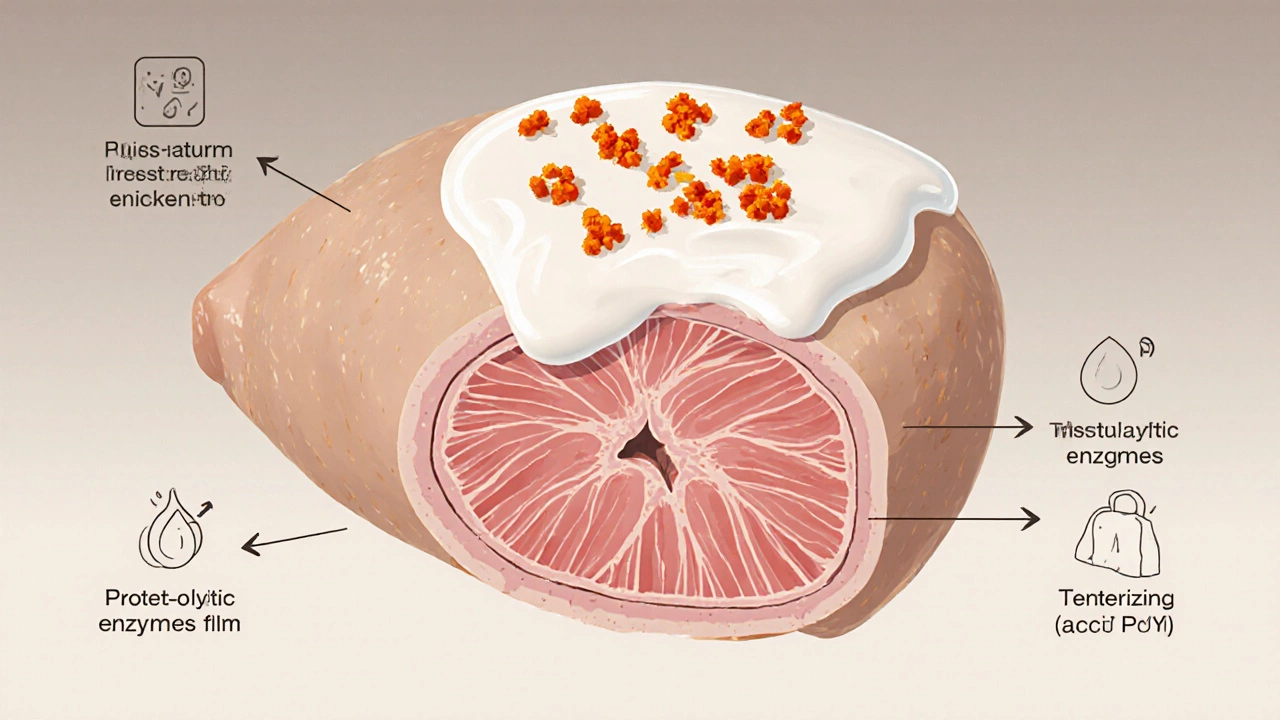
Food‑Safety Perspective: Is Rinsing Worth It?
Raw chicken carries Food Safety concerns (risk of Salmonella, Campylobacter, and other pathogens). When you marinate it in a yogurt mixture, the low pH helps inhibit bacterial growth on the surface. Rinsing the chicken after marination re‑introduces the risk of spreading bacteria around the sink and onto other foods.
The USDA recommends always handling raw poultry with care, using a separate cutting board, and avoiding any rinsing step that could cause splatter. From a safety standpoint, keeping the yogurt coating intact is the safer choice.
When (If Ever) Would You Rinse?
There are only a few scenarios where a gentle rinse might make sense:
- Over‑marinated chicken - If you left the meat in the fridge for 24+ hours, the yogurt can become overly thick, making it hard for heat to penetrate.
- Allergy concerns - Some guests might be lactose intolerant. A quick rinse can remove most of the dairy while still preserving some spice coating.
- Extreme heat cooking - In a wood‑fired tandoor that reaches 500 °F (260 °C), a very thick yogurt layer may burn before the interior cooks. Pat‑drying with a clean towel can reduce that risk without a full rinse.
In all other cases, skip the rinse.
Step‑by‑Step Guide: From Marinade to Plate (No Rinse)
- Mix the Yogurt Marinade ingredients until smooth.
- Add the chicken pieces, ensuring each piece is fully coated. Transfer to a zip‑lock bag or shallow dish.
- Cover and refrigerate for 2-8 hours. For deeper flavor, go up to 12 hours, but not beyond 24 hours.
- Pre‑heat your grill, oven broiler, or tandoor to 400-450 °F (200-230 °C). If using a grill, oil the grates lightly.
- Remove the chicken from the fridge. Use a clean hand or tongs to shake off excess yogurt-no water needed.
- Cook the chicken skin‑side down for 5-7 minutes, then flip and cook another 5-7 minutes, or until the internal temperature hits 165 °F (74 °C).
- Let the meat rest for 5 minutes before serving. This allows the juices to redistribute.
The result is a juicy, fragrant piece of tandoori chicken with that iconic pink‑orange crust-all without a single rinse.
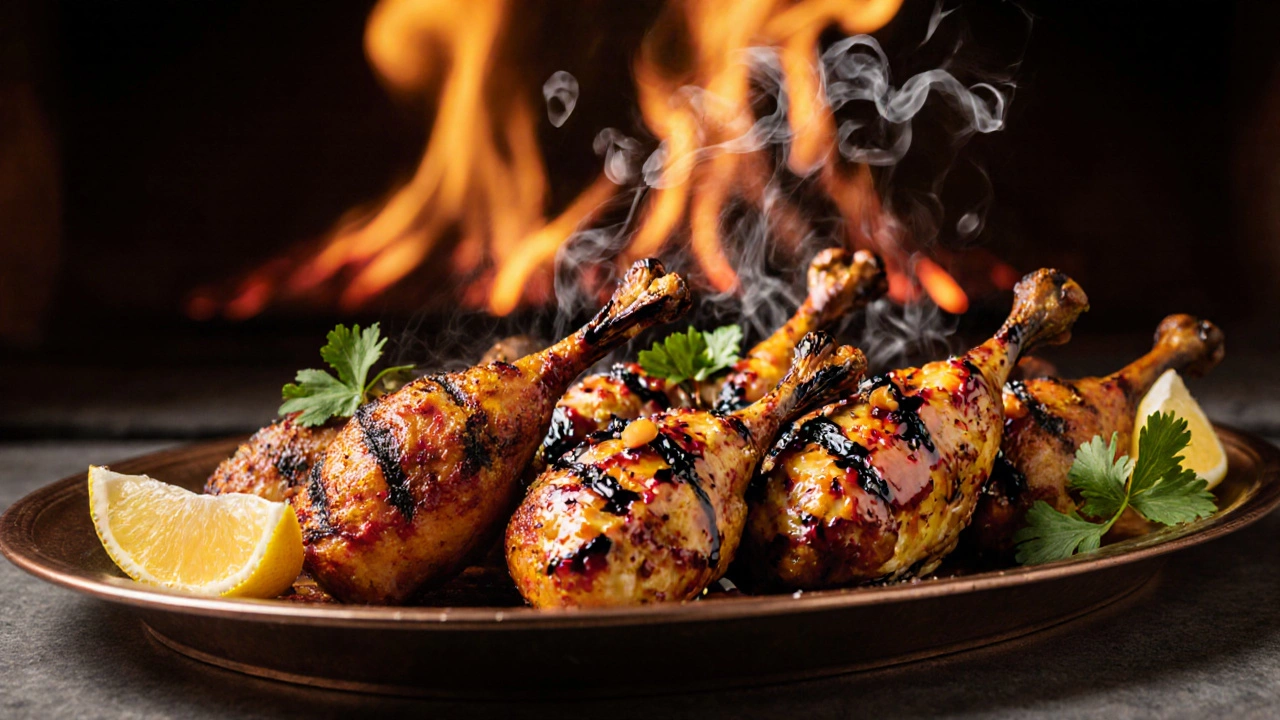
Rinse vs. No‑Rinse: Quick Comparison
| Aspect | Rinse | No Rinse |
|---|---|---|
| Flavor retention | Loss of spice coating, milder taste | Full flavor and color stay intact |
| Moisture | Potential drier meat | Yogurt film locks in juices |
| Safety | Risk of cross‑contamination in sink | Acidic coating reduces surface bacteria |
| Burn risk | Less chance of yogurt burning | Thin layer may char at very high heat |
| Prep time | Extra step adds minutes | Streamlined workflow |
Common Mistakes & How to Avoid Them
- Using low‑fat yogurt - It lacks the richness that creates a glorious crust. Full‑fat or Greek yogurt works best.
- Marinating for too long - Beyond 12 hours, the texture can become mushy.
- Skipping the dry‑shake - Just because you’re not rinsing doesn’t mean you should serve the chicken swimming in excess sauce; a gentle shake gives a perfect coating.
- Cooking at too low a temperature - You need that high heat to caramelize the spices; otherwise you’ll get steamed chicken with no tandoori vibe.
Quick FAQ
Can I use plant‑based yogurt for the marinade?
Absolutely. Coconut or almond yogurt works, but choose an unsweetened variety and add a splash of lemon juice to keep the acidity level similar.
How long should I let the chicken rest after cooking?
A 5‑minute rest is enough. It lets the juices settle and prevents them from spilling out when you cut into the meat.
Is it safe to marinate chicken at room temperature?
No. Even with the acidic yogurt, leaving raw chicken out for more than 2 hours can promote bacterial growth. Always refrigerate.
Should I add oil to the yogurt mixture?
A tablespoon of mustard oil or melted ghee adds richness and helps the spices adhere better, but it’s optional.
Can I use the same method for other meats?
Yes. Lamb chops, pork tenderloin, or even firm tofu respond well to the same yogurt‑spice blend. Adjust marinating time based on thickness.
Bottom line: Keep the yogurt coating on your chicken, give it a quick shake instead of a rinse, and let the heat do its magic. You’ll get the classic tandoori flavor, juicy meat, and peace of mind that you didn’t spread raw‑chicken splatter on your kitchen sink.
- Poplular Tags
- yogurt marinade
- tandoori chicken
- rinse chicken
- cooking tips
- Indian recipes





